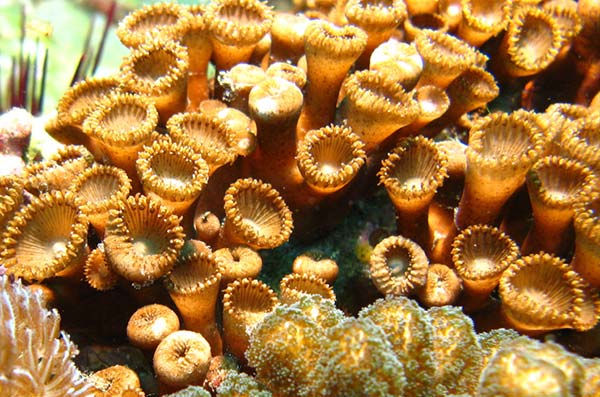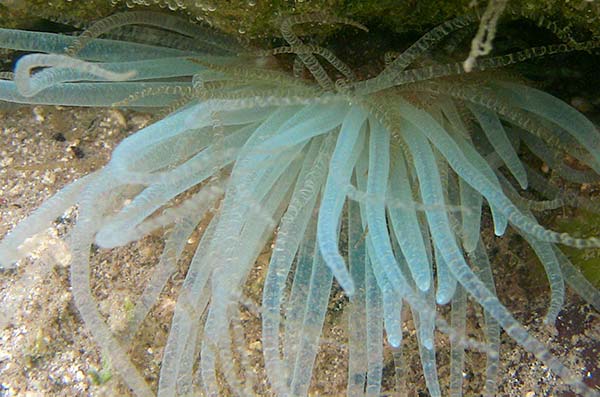6. Anemone Habitat
17. Anemones can exist in all marine habitats. They can live from the tropics to the icy waters of the Arctic. Neither can a specific depth be identified. Although most anemones prefer to live in shallow waters with nutrient-rich currents, some specimens have their home at great depths.
18. A remarkable sea anemone fact is the symbiotic relationships they establish with their environment.
- Anemone Clownfish and Other Animal Mutualisms
19. Thanks to “Finding Nemo,” the public learned that clownfish live in anemones, but they are not the only ones. They also harbor some shrimp. How is this possible? Don’t anemones sting them?
Yes, they do, but both have strategies to avoid the poison. In fact, if a shrimp leaves its anemone to move to another, its new home will sting them until they develop its adaptation strategy. It consists of rubbing their bodies against the mucosa of the anemone itself.
20. Clownfish, meanwhile, already have a mucous membrane covering their scales.
21. This association that unites the anemone with the clownfish and certain shrimp is called mutualism. It is not a dependent relationship, they can live without each other, but they make life easier.
While the clownfish gets protection from predators and undigested food debris, the anemone gets rid of parasites and nutrients from fish excrement. The shrimp, for their part, protect the anemone against fireworms and other nudibranch.
22. Thanks to the symbiotic relationship that sea anemones establish with algae, they can take advantage of sunlight. As they are animals, anemones do not photosynthesize. However, there are unicellular algae called zooxanthellae, which live inside anemones.
Zooxanthellae do a similar job for corals. With their photosynthesis, they provide the anemone with sugars and oxygen. On the other hand, the algae are protected from predators and obtain food from the catabolites of the sea anemone (mainly phosphorus and nitrogen).
23. Many anemones participate in the primary production of coral reefs by hosting zooxanthellae.












